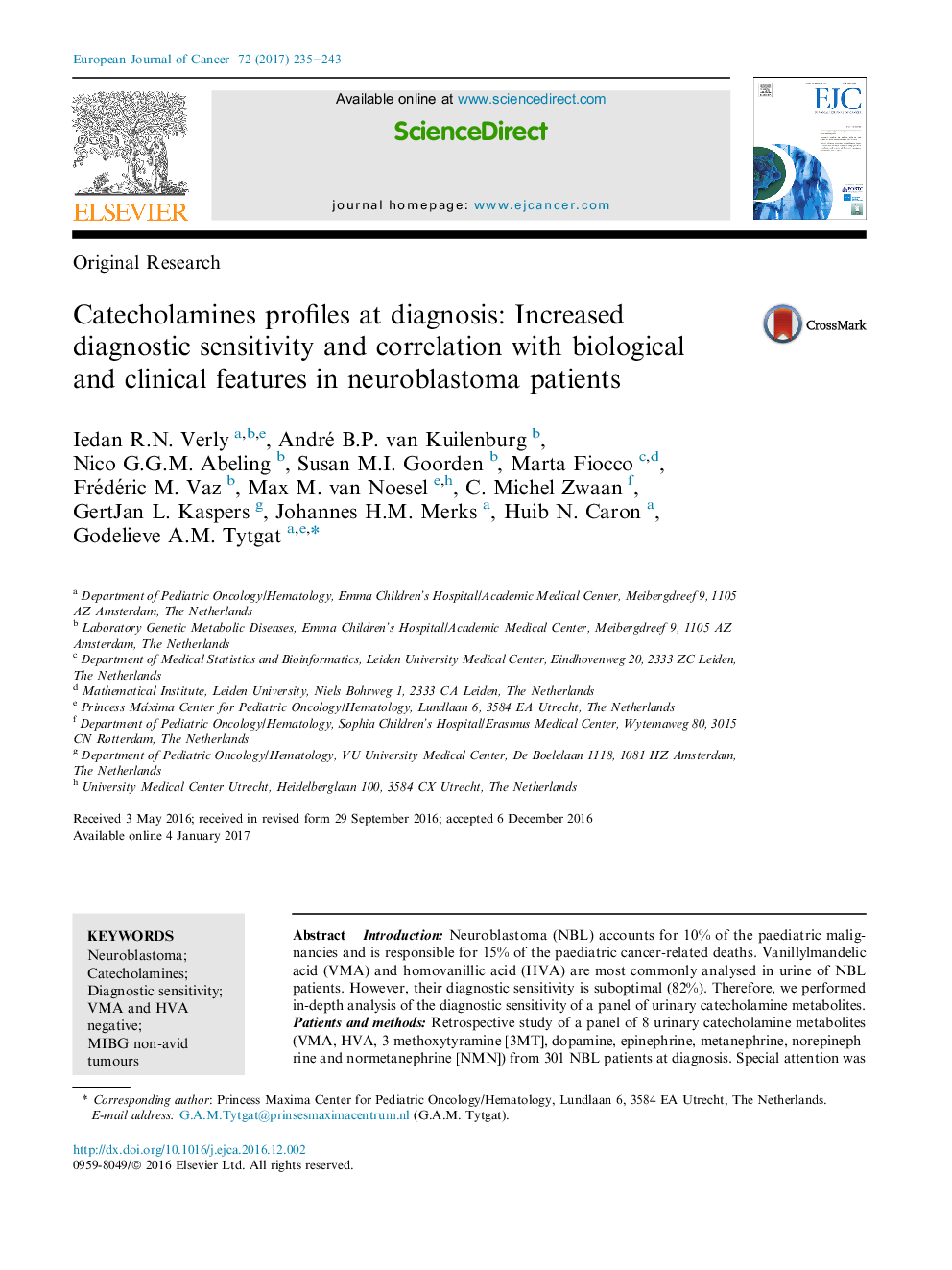| Article ID | Journal | Published Year | Pages | File Type |
|---|---|---|---|---|
| 5526319 | European Journal of Cancer | 2017 | 9 Pages |
â¢Eight catecholamine metabolites have a diagnostic sensitivity of 95%; VMA and HVA have a diagnostic sensitivity of 84%.â¢Normetanephrine is the most sensitive marker for neuroblastoma (NBL) diagnostics (89%).â¢3-methoxytyramine correlates the best with NBL high-risk features.â¢Twenty-nine percent of the VMA and HVA non-excreting patients have a stage IV disease.â¢Metaiodobenzylguanidine non-avid tumours excrete VMA and HVA in 33%, while other metabolites excrete in 89%.
IntroductionNeuroblastoma (NBL) accounts for 10% of the paediatric malignancies and is responsible for 15% of the paediatric cancer-related deaths. Vanillylmandelic acid (VMA) and homovanillic acid (HVA) are most commonly analysed in urine of NBL patients. However, their diagnostic sensitivity is suboptimal (82%). Therefore, we performed in-depth analysis of the diagnostic sensitivity of a panel of urinary catecholamine metabolites.Patients and methodsRetrospective study of a panel of 8 urinary catecholamine metabolites (VMA, HVA, 3-methoxytyramine [3MT], dopamine, epinephrine, metanephrine, norepinephrine and normetanephrine [NMN]) from 301 NBL patients at diagnosis. Special attention was given to subgroups, metaiodobenzylguanidine (MIBG) non-avid tumours and VMA/HVA negative patients.ResultsElevated catecholamine metabolites, especially 3MT, correlated with nine out of 12 NBL characteristics such as stage, age, MYCN amplification, loss of heterozygosity for 1p and bone-marrow invasion. The combination of the classical markers VMA and HVA had a diagnostic sensitivity of 84%. NMN was the most sensitive single diagnostic metabolite with overall sensitivity of 89%. When all 8 metabolites were combined, a diagnostic sensitivity of 95% was achieved. Among the VMA and HVA negative patients, were also 29% with stage 4 disease, which usually had elevation of other catecholamine metabolites (93%). Diagnostic sensitivity for patients with MIBG non-avid tumour was improved from 33% (VMA and/or HVA) to 89% by measuring the panel.ConclusionsOur study demonstrates that analysis of a urinary catecholamine metabolite panel, comprising 8 metabolites, ensures the highest sensitivity to diagnose NBL patients.
